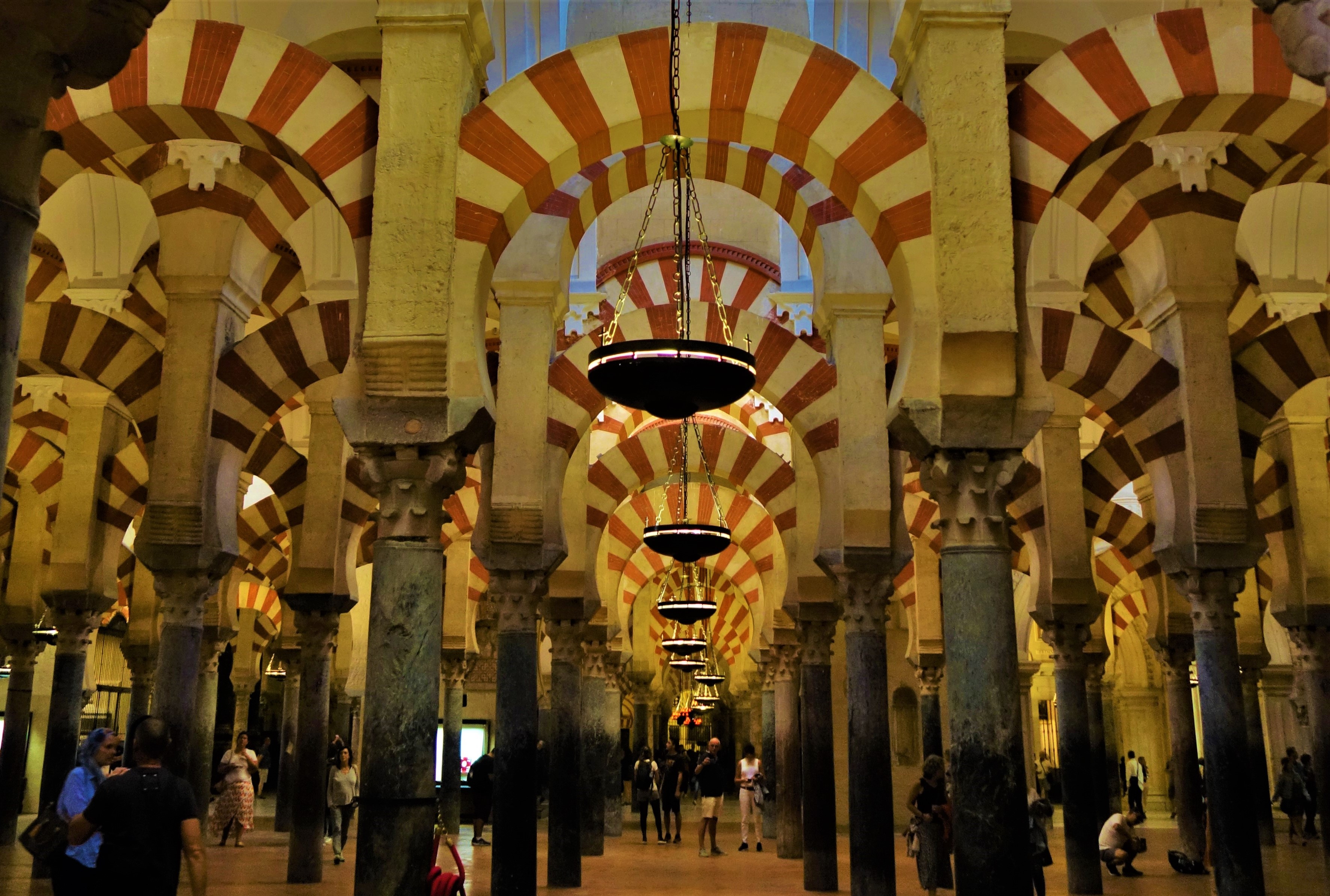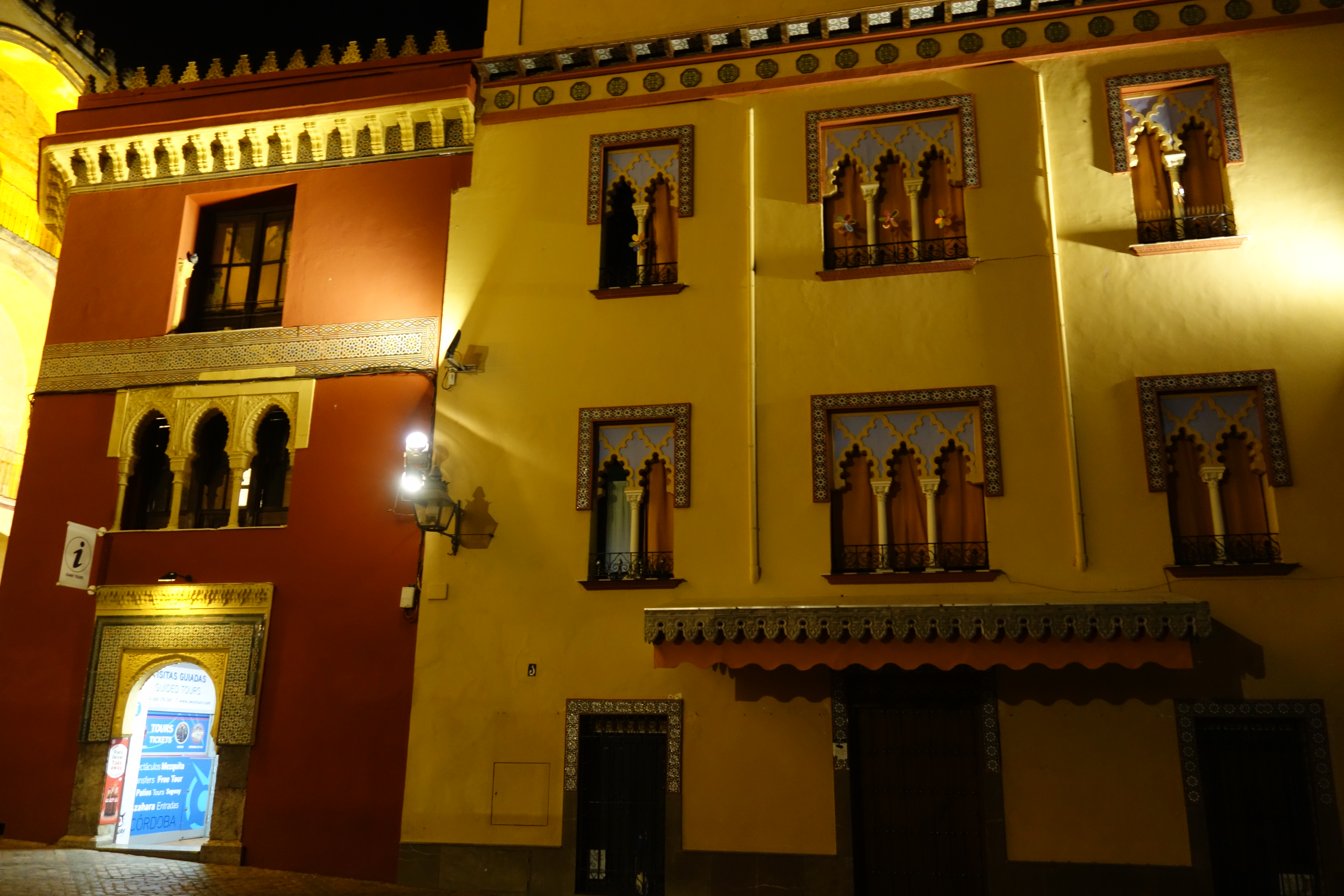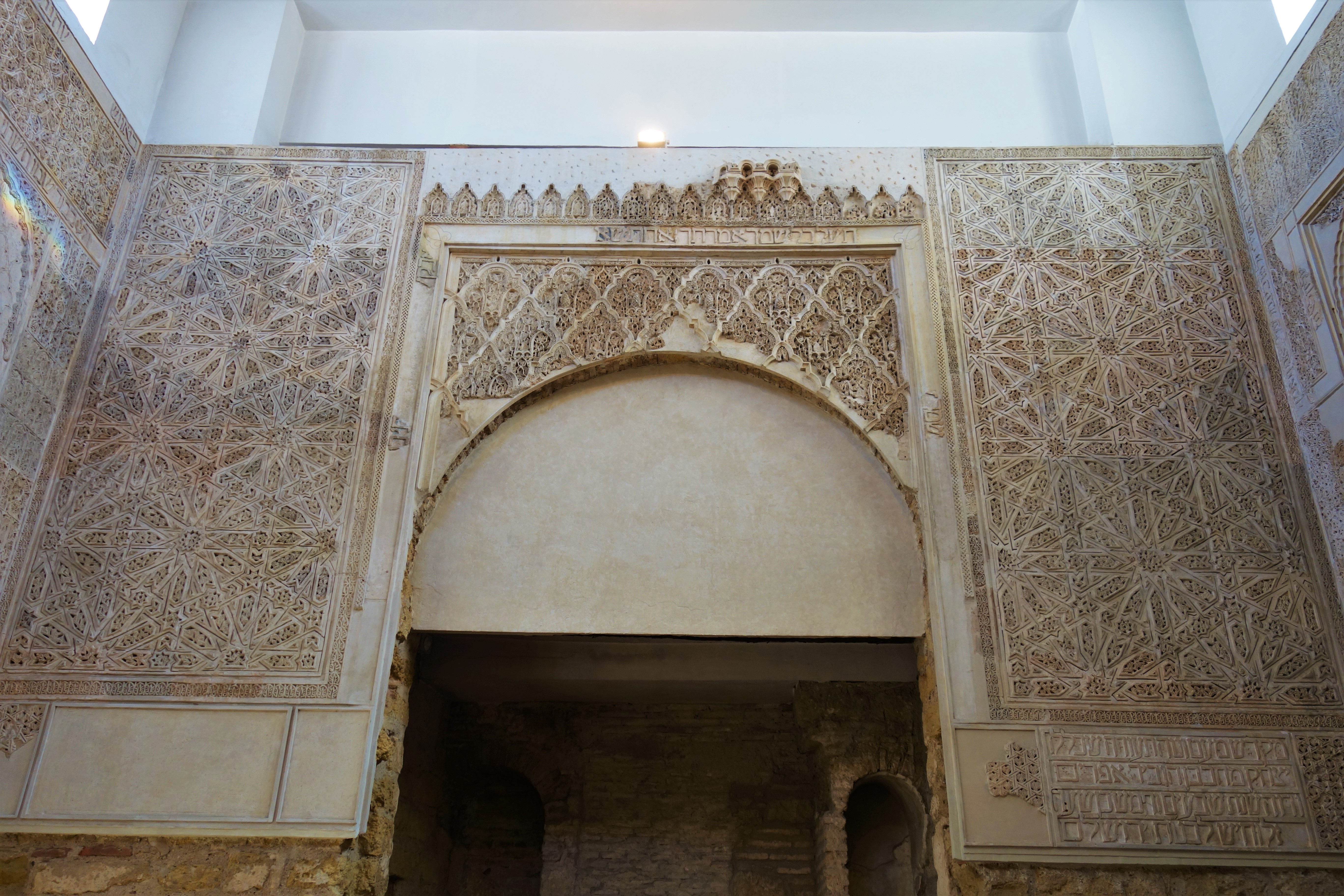[SPAIN] Cordoba Travel Recommendation

Cordoba is a fascinating city in Andalusia, southern Spain, which is rich in history and diverse culture. It used to be the capital of a Roman province, followed by a Muslim conquest and later becoming the capital of the Umayyad Caliphate. It is the only city in the world to have four UNESCO-protected sites. You will be able to see a mixture of Roman, Islamic, Jewish and Christian architecture in the city.
Getting in:
You can either take a train or bus to Cordoba as the closest major airports are in Seville, Malaga and Madrid. I took a high speed train from Madrid in the morning and arrived in Cordoba around noon. The train ride was about 1 hour 55 minutes. It cost me about EUR 55 for 2 adults. Child under 4 travel for free but it must be included in the reservation. Official website: https://www.renfe.com/es/en
From Seville to Cordoba, the train ride is about 1 hour 15 minute.
Cordoba Central station is the major stop along the high speed AVE Madrid - Seville line and AVE Madrid - Malaga line, as well as other regional and national train route. From the railway station, you will need to take a bus to get to the city. If you choose to walk, it is about 20 minutes walk to the Mezquita-Catedral de Cordoba or the Roman Bridge.
Getting around:
Cordoba is easy to explore on foot and most attractions are located in the old city. Alternatively, there is a dozen bus lines covering the entire city. The ticket is sold by the bus driver. A single ticket cost EUR 1.30. For details, visit Aucorsa website in Spanish:www.aucorsa.es or you can see the urban line bus network here.
Accommodation:
I chose to stay at Casa Turistica La Torre, which is located directly opposite of Mezquita-Catedral de Cordoba. The location is just perfect and within walking distance to all attractions. I can even see the bell tower of the Mezquita from its roof patio. The room has 3 single beds and 1 night stay cost me EUR 40.50. Take note that there is no lift and you need to lift your luggage up the narrow stairs. Don't bring large suitcase.
My itinerary in Cordoba:
Map above marks the attractions in Cordoba. The yellow star is the location of my accommodation, Casa Turistica La Torre. The blue box is the location of Cordoba Central railway station. (Click to see larger map)
Day 1: arrived in Cordoba Central station -> check in -> Triunfo de San Rafael de la Puerta del Puente -> Puerta del Puente (city gate) -> Roman Bridge of Cordoba -> Torre de la Calahorra -> Molino de la Albolafia -> Alcazar de los Reyes Cristianos -> Baños del Alcázar Califal (Moorish bath & museum) -> Museo Taurino Cordoba (Bullfighting Museum) -> Cordoba Synagogue -> Puerta de Almodovar -> Jewish Quarter -> Templo Romano (Roman ruins) -> lunch -> San Pablo Church -> Plaza de la Corredera -> Plaza del Potro -> dinner & watch flamenco dance free show at Restaurante Patio de la Juderia
Day 2: Calleja de las Flores -> Mezquita-Catedral de Cordoba -> train to Seville
What to see:
1) Mezquita-Catedral de Cordoba

First and foremost, one must visit the Mezquita-Catedral de Cordoba while in Cordoba. This former-mosque-turned-cathedral is unique and beautiful with its striking red and white striped arches inside. You may enter it for free from 8:30am-9:40am only. However, this is for individual tourists only. You can further read my visit here: Mezquita-Catedral de Cordoba
Admission: EUR11 (general admission to mosque-cathedral), free for child under age 10, EUR 18 for night visit
Opening hours: 10am-2pm & 4pm-7pm (Mon-Fri), 10am-7pm (Sat), 8.30am-11.30am & 4pm-7pm (Sun), last entry 30 minutes before closing
Official Website: https://mezquita-catedraldecordoba.es/en/
2) Triunfo de San Rafael de la Puerta del Puente
Triunfo de San Rafael de la Puerta del Puente is actually a 18th century monument which features the Archangel Raphael, the guardian angel of Cordoba. It is located just a 2-min walk from the Mezquita.
3) Puerta del Puente (city gate)
Puerta del Puente is a 16th century gate built to commemorate a visit to the city by King Philip II. It is located on the site of the previous Roman gates and right in front of the Roman Bridge. There is a bus stop in front of the gate.
The tourist office (marked with an i) is located behind this gate.
4) Roman Bridge of Cordoba
Roman Bridge of Cordoba was built by the Romans in the early 1st century BC. It was the city's only bridge across the river until the construction of the San Rafael Bridge in the mid 20th century. It is now a pedestrian bridge since 2004.
5) Torre de la Calahorra
Torre de la Calahorra (Calahorra Tower) is the oldest defense building in old city of Cordoba. It was erected by the Moors and is located on the left bank of the river. It is now a museum.
Admission: EUR 4 (adult), EUR 3 (group > 15 ppl), free for child under 8.
Opening hours: Daily from 10am - 2pm & 4.30pm - 8.30pm (May - Sep), 10am - 6pm (Oct - Apr)
6) Molino de la Albolafia
Molino de la Albolafia is a medieval waterwheel along the Guadalquivir River. It is close to the Roman Bridge and the Christian Alcazar.
7) Alcazar de los Reyes Cristianos
Alcazar de los Reyes Cristianos (Christian Alcazar) was built in the 8th century as caliphate residence. The complex served as one of the primary residence of Catholic Monarchs Ferdinand and Isabella during the Middle Ages. The entire fortress is encircled by massive walls and four towers with a beautiful garden. I did not enter to visit due to time constraint.
Admission: EUR 5 (adult), free for child under 14.
Opening hours: Closed on Mondays
15 Jun - 15 Sep: 8.45am - 2.30pm (Tue - Sun)
16 Sep - 14 Jun: 8.15am - 8pm (Tue - Fri), 9.30am - 6pm (Sat), 8.15am - 2.45pm (Sun)
8) Baños del Alcázar Califal (Moorish bath & museum)
Baños del Alcázar Califal is a Moorish bath house of the 10th-century caliphate. It has cold room, warm room and hot room complete with underfloor heating system. This underground complex has been partly restored to its original appearance. Four of them have vaults with star-shaped skylights, supported by horseashoe arches on marble capitals and columns.
Admission: EUR 3 (adult), free for child under 14.
Opening hours: Closed on Mondays
16 Jun - 15 Sep: 8.30am - 3pm (Tue - Sat), 8.30am - 2.30pm (Sun)
16 Sep - 15 Jun: 8.30am - 6.30pm (Tue - Sat), 9.30am - 2.30pm (Sun)
9) Museo Taurino Cordoba
Museo Taurino Cordoba is a Bullfighting Museum. It is currently closed for renovation. Website: https://www.andalucia.org/en/cordoba-cultural-tourism-museo-taurino-de-cordoba
10) Cordoba Synagogue
Cordoba Synagogue was built in 1315. It is the only preserved synagogue in Andalusia after the expulsion of Jewish in 1492 and it is one of the three synagogues left in Spain, the other two are in Toledo. It has two floors, ground and upper floor. It is quite small but the plaster on the walls is gorgeous.
Opening hours: Daily from 10am - 2pm & 3.30pm - 5.30pm (Tue - Sat), 10am - 2pm (Sun)
11) Puerta de Almodovar
Puerta de Almodovar is part of the west side ancient city wall. It provides access to Juderia, the ancient Jewish Quarter.
12) Jewish Quarter
Jewish Quarter is a maze of tiny squares and narrow streets. There are many picturesque buildings with whitewashed walls with colourful balconies and blooms.
13) Templo Romano (Roman ruins)
Templo Romano is the ruins of the former Roman Temple. Only several monumental columns and its foundation, stairs and altar remains. It is adjacent to the Cordoba City Hall.
14) San Pablo Church
San Pablo Church is a church nearby the Templo Romano.
15) Plaza de la Corredera
Plaza de la Corredera is one of the most magnificent square in Cordoba. The square's appearance has remained unchanged since the 17th century. There are many cafes and restaurants at this square. I love the straw woven products at one of the stores. Wish I could bring back the straw woven bulll head, it would make a really unique souvenir.
16) Plaza del Potro
Plaza del Potro is a quiet, lovely square, not far from the river banks. It is famous for the so-called Posada del Potro, a former inn being mentioned in Miguel de Cervantes' "Don Quixote".
17) Calleja de las Flores

Calleja de las Flores is a narrow streets filled with potted flowers on both sides and a small square at the end. If you want to take photo with virtually no one else around, come here early in the morning. Even in the evening, you can still find people taking photos here.
What and Where to Eat:
I had lunch at Taberna Rafalate near the Templo Romano. Food and service was decent, I especially like the Spanish eggplant fries with honey which is called Berenjenas con Miel. The other dishes that I had like fried fish and kebab were average.
For dinner, I dined in at Restaurante Patio de la Juderia. The best part is I could watch flamenco dance for free during dinner. I booked my appointment during noon for dinner. It is advisable to do so as the place seemed to packed during dinner.
Restaurante Patio de la Juderia is a classic Spanish restaurant in an 18th-century house. The ambience was nice.
As for the food, I ordered Salmorejo (Spanish cold tomato soup with ham) and two other meat dishes - one was steak, I think (I honestly can't remember what I ordered). The soup was memorable and so was the show.
I must say the performance of flamenco dance was exciting and full of passion! Two thumbs up! Shooting video of the show is prohibited but taking photo is allowed. You need to watch the show for yourself to truly enjoy it.
What to Buy:

The best place to buy souvenirs is at the Jewish Quarter. The fridge magnets of small potted flowers and the red and white striped arches of the Mezquita are cute souvenirs to bring home.


For bigger and more authentic souvenirs, you can buy some decorative plates, beautiful mosaics and tile letters.
Over all, I really like Cordoba. The city is vibrant and colourful with plenty things to see and do.











































































![[MALAYSIA] How To Do A Self Guided Walking Tour in Kota Kinabalu](https://blogger.googleusercontent.com/img/b/R29vZ2xl/AVvXsEgR_cJjX4Shl9rsz0ufzxjmtLMq5PAvmTNDHypSVV2CYDaarZVj8EMznRkXqdVeCGg2yEMdFqPtI5rvrmMtJVSL1W9jqOtdCM2EFAc5ZTWn7XzPQV5sqS4s1DO0T_AuF0nq_dLQ53b9-ju3yyLJUrvU2TlhbmD4rDDV5-aPFaT2WEQZ1c257JXGUhyfsw/s72-c/20220524_131141.jpg)
![[JAPAN] Osaka Universal Studio](https://blogger.googleusercontent.com/img/b/R29vZ2xl/AVvXsEilW88BKY24KkvC4WjRfTktmxFmylxMsDD8emYT93x8bOlgqzMV1feAp28Si_GPn3hyFD2E97CMmP3X6kceDfFa9WB_7qr2BFvmu20iVJRaNlZd1BfoyUUj5ZgofOgK5lZGoqVDS4-1YLTo/s72-c/?imgmax=800)
![[FRANCE] My Favourite Paris Eiffel Tower Photo Spots](https://blogger.googleusercontent.com/img/b/R29vZ2xl/AVvXsEi220KHLfBDpyO53KorHwAb0KQEuiiaVDlrFYwEEAvs8YvKb-Edmyt7Hl7rZszN6qc-GM4e3SmjBS2pUiCiv8ljl8mnrUR93Ljxb0xGrSZ4sZLPRErpbAj29btKvnIC67xV93iKnrH3QRcc/s72-w781-c-h505/DSCF4372.JPG)



![[MONACO] How To Visit Monaco In One Day From Nice](https://blogger.googleusercontent.com/img/b/R29vZ2xl/AVvXsEgZkJeVAOmz4LTRwY2uDTK131UJVUWH_44GUUU3H-ni63dK2BlNqITBIh5Tdcpz9kXTUb7ePW7f-PQ1Y7E6B4lnqKEHs_nL3Eop-ouoFhxayMI4lNCcUG-oJnGMVwpGDlBu8lfgn10H_QHw/s72-c/DSC06605.JPG)
![[FRANCE] My Unforgettable Trip to Mont Saint-Michel](https://blogger.googleusercontent.com/img/b/R29vZ2xl/AVvXsEiVPyy72HIGsb8lnH7zvmCT8fKDLby20OtHvFN2rAp_BWadwYBvOq3Ny-JtjTu1CTXP4rSHUxr7Z0yOgE7zFqDFwC2HEuCWp-F2ykSwXCFNeis4Q7a5IpyepHyfv9BXibLV2s8E-7mqMFx4/s72-c/DSC05363.JPG)
0 comments: